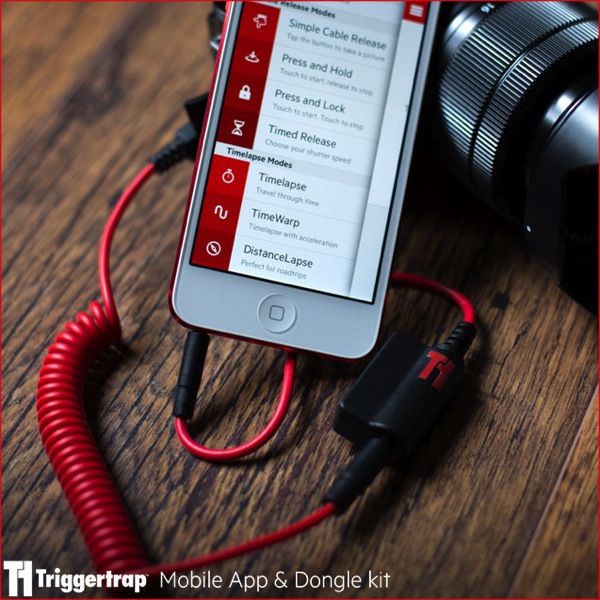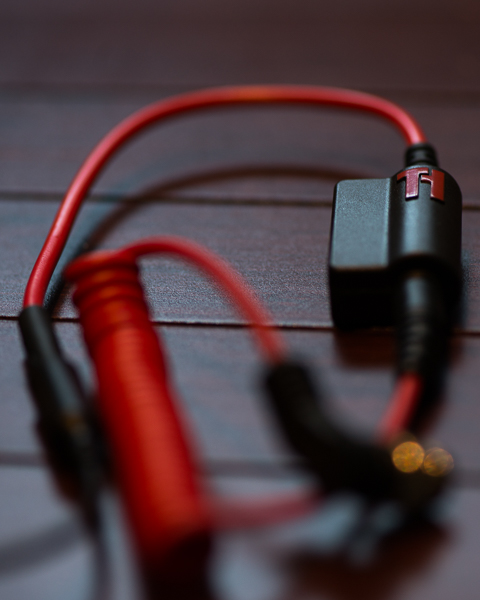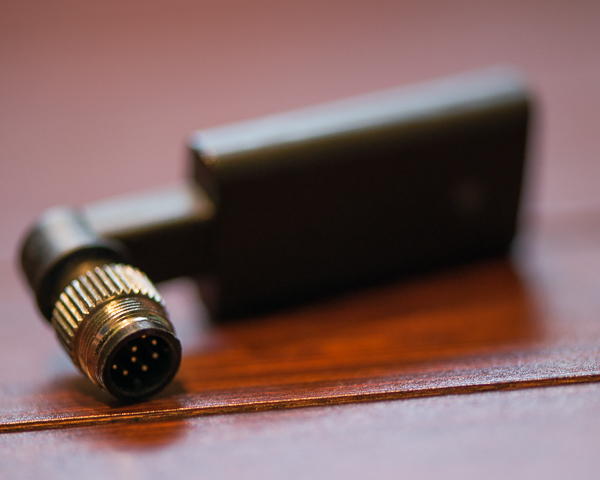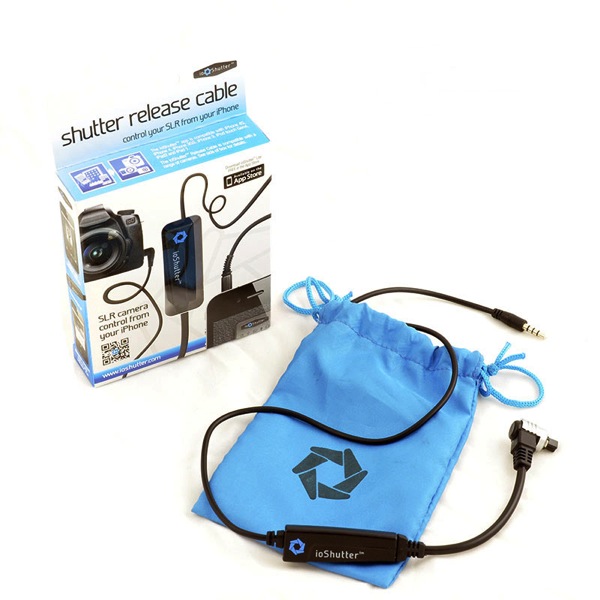Introduction
 |
| From left, the Alpine Labs Spark and the Miops Mobile Dongle. |
Finger. Shutter button. Click. Next.
That sequence is so ingrained in our idea of “taking a photo” that it’s pure muscle memory. Many situations call for more than just the press of a finger to capture a shot, though, which is where remote triggers come in.
Plenty of us have a remote release cable buried in our camera bags that activates the shutter from a foot or two away. But what about when you want to trigger a night sky shot in the bitter cold from within the comfortable confines of a sleeping bag? Or hours of time-lapse long exposures? What about automatically tripping the shutter when something moves in front of the camera?
These are exactly the needs that app-based triggers are designed to meet. And while there are traditional accessory triggers that’ll individually accomplish one of the above tasks, none do it all.
Key features of app-based remote releases
- Remotely trigger a camera’s shutter
- Automate time-lapse capture sequences
- HDR capture that’s more flexible than some cameras’ built-in modes
- Activate the camera shutter using external stimuli such as sound or movement (Miops only)
 |
| A photo shot using the Miops Mobile Dongle’s sound trigger function. |
Devices to enable remote capture aren’t new, but the popularity of smartphones has shifted attention to app-based solutions. With a small activation device or cable connected to the camera, software on the phone can handle the details—and be easily updated for fixes or new features. I looked at two recent products that connect your camera and smartphone, the Alpine Labs Spark and the Miops Mobile Dongle.
Alpine Labs Spark
$ 74 | AlpineLaboratories.com
 |
| The Alpine Labs Spark can sit in the camera’s hot shoe. |
The Alpine Labs Spark ($ 74) is a triple-purpose remote trigger. The unit itself sits on top of your camera in the hot-shoe and connects via USB – you need to make sure you have the right cable for your camera model – with a single button on top that can activate the shutter when pressed. Or, for compatible cameras with infrared ports, the Spark on its own can trigger a shot wirelessly.
Things get more interesting with the third connection method, paired with a smartphone running the Spark app via Bluetooth wireless networking. When both devices are within range (up to 100 feet), the app can trigger the shutter remotely, or you can set a timed or manual long exposure capture. The Spark includes a battery that Alpine Labs says is good for more than 2,000 hours.
 |
 |
| The trigger options in the Spark app. | Setting a long exposure in the Spark app. |
You also have control over creating time lapse images, setting an interval and total duration of the shoot, such as one frame every 30 seconds over the course of an hour. Or, you can capture a series of HDR brackets with the option of choosing the number of images and the exposure adjustment between each shot. There’s even a Photo Booth mode that dictates how many photos to capture and the delay between each shot.
Commands are sent and stored in the battery-powered Spark, so for long exposures or time lapse sequences, the app doesn’t need to stay engaged and drain your phone’s battery.
With the Spark connected to my Fujifilm X-T1, I couldn’t get the Time Lapse mode to work at all
Although the Bluetooth connection promises more interesting uses, “interesting” can go in a few different directions, and not always forward. With the Spark connected to my Fujifilm X-T1, I couldn’t get the Time Lapse mode to work at all; even more annoying is a bug that repeatedly pops up a dialog exclaiming that the time lapse is finished. Similarly, the HDR mode was spotty during my time with the unit; sometimes it worked, sometimes it didn’t.
The Spark offers exposure adjustments in full stops, not partial ones, and for whatever reason, when I’m capturing three shots with one-stop difference between them, I end up with three identical one-second exposures. It also assumes you’re only shooting in dark conditions, because the fastest shutter speed it offers is 1/10 (the camera needs to be in bulb mode).
Ultimately, the Spark shows promise, but Alpine Labs needs to work through some software issues.
What we like:
- Compact and easy to pack
- Device sits in camera’s hotshoe
- Camera can be triggered via USB, infrared or Bluetooth (using a smart device and the Spark app)
What we don’t:
- Overall, unreliable
- Buggy mobile app
- Only full stop exposure adjustments offered
![]()
Miops Mobile Dongle
$ 37 | Miops.com
Unlike the Spark, the Miops Mobile Dongle ($ 37) is literally just a cable that connects your camera to a smartphone. The cable has two sections: one attaches to your camera’s USB port (you need to specify your camera mode when ordering), and the other attached to the headphone port on your mobile phone. If you own a recent iPhone or Android phone that doesn’t offer a dedicated headphone port, you can use the adapter that came with your phone – yes, that means a dongle for the dongle (see image below).
 |
| The Miops Mobile Dongle is a pair of cables (assisted by the Lightning port adapter that came with the iPhone X), which communicates using the Miops app. |
With the connection made, the Miops Mobile app presents 15 different ways to trigger the camera’s shutter. There are the usual methods, like Cable Release, Self Timer, and Basic Timelapse, but those are just basics. With the Miops app, the phone plays a much more interactive role.
 |
| Some of the options in the Miops app. |
For example, you can trip the camera shutter when the phone’s microphone registers a sound above a specific volume level, or when the phone’s built-in camera registers movement. Or take advantage of the phone’s accelerometer and grab a shot when it detects vibration. The Road Lapse feature uses the phone’s GPS to record a shot every X number of meters or feet as you travel, up to a specific number of frames.
Some of the features automate other tasks to make things easy for you, such as HDR Timelapse, which captures brackets at set intervals, or Bulb Ramping Timelapse, which lets you set an initial exposure and a final exposure so the shots remain evenly exposed even as light levels drop or rise (during sunset or sunrise, for instance).
 |
 |
| Running a Bulb Ramping Timelapse in the Miops Mobile app. | The Miops Mobile app uses the phone’s microphone to trigger the shutter by sound. |
 |
 |
| Whacking the underside of the table provided the sound needed to trigger the shutter using the Miops dongle. | Here’s the setup for capturing a shot based on sound. |
A ‘Scenario’ feature enables you to combine modes like a recipe, such as firing an HDR once a sound level is reached. As a bonus, there’s also a Neutral Density Calculator to figure out ideal shutter speeds when using ND filters, and a Solar Calculator that lists sunrise and sunset times.
The downside to the Miops Mobile Dongle is that the phone has to be physically connected
to the camera
The downside to the Miops Mobile Dongle is that the phone has to be connected by the cable to the camera. So, even if the camera is set up on a tripod, you’re still juggling the phone. I solved that by purchasing an inexpensive mini ball head mount that fits into the camera’s hot shoe, and then screwing a Studio Neat Glif onto it to hold the phone in place.
Even without a wireless connection, though, the Miops software offers plenty of remote-triggering options at an affordable price.
What we like:
- Compact and easy to pack
- The Miops app’s many triggering methods, including sound and motion
- Reliability
- Affordability
What we don’t:
- The dongle’s physical connection requires juggling a phone
- Some modern phones that lack headphone ports require that you add a dongle to the dongle
![]()
Miops also sells the $ 125 Mobile Remote, which is a wireless device akin to the Spark, and the $ 219 Miops Smart, with additional triggering modes like a laser sensor.
Articles: Digital Photography Review (dpreview.com)










